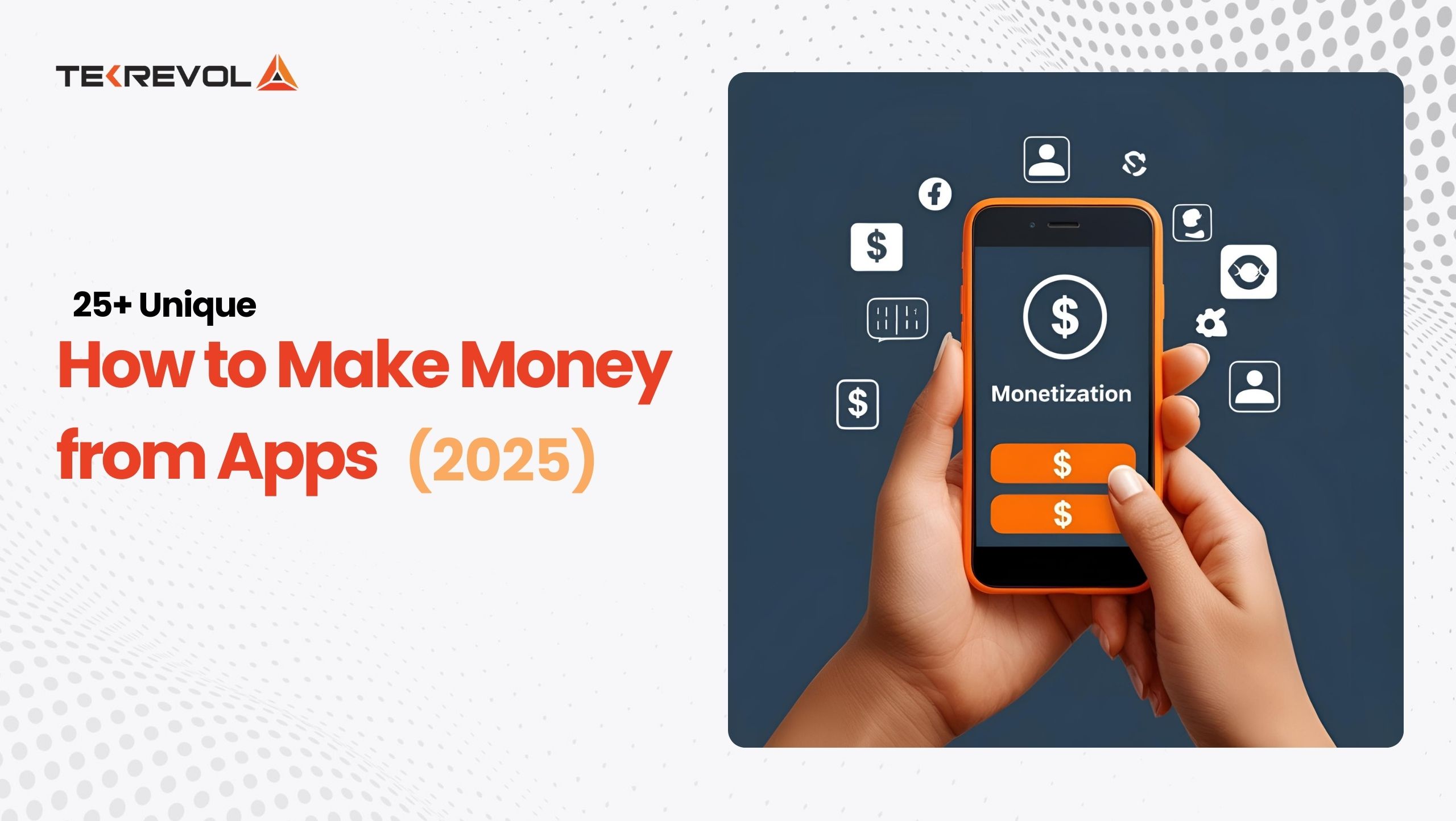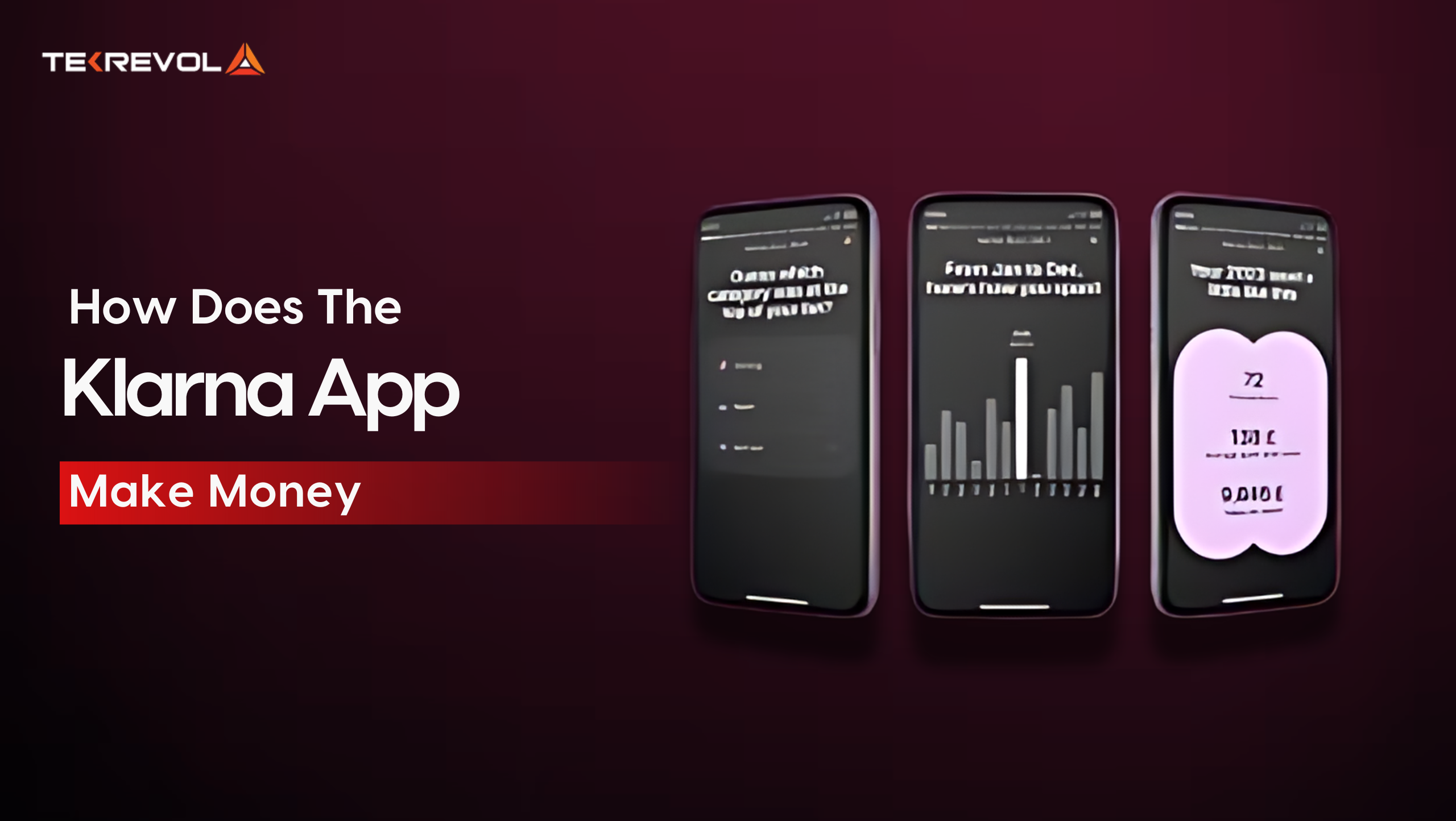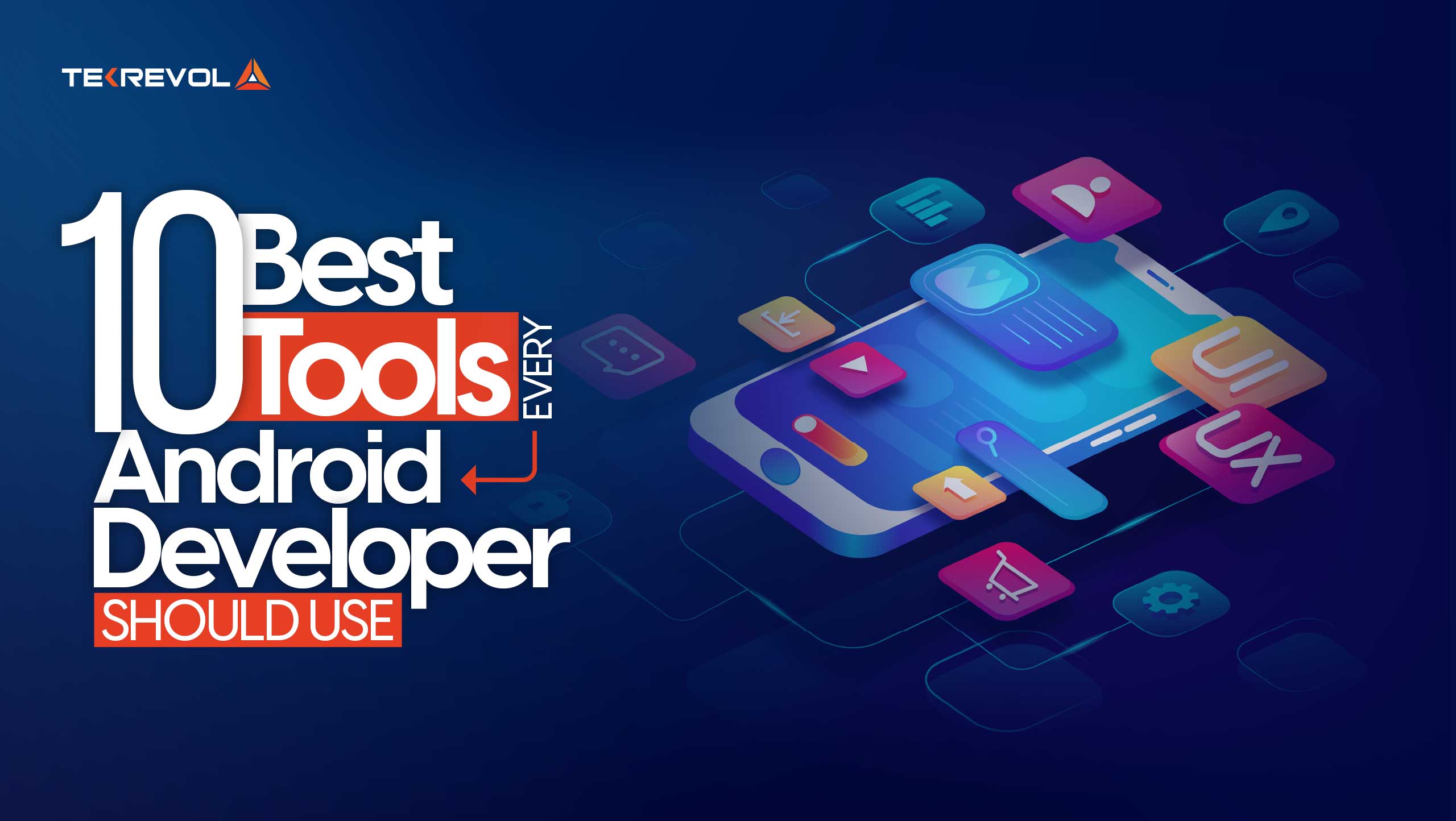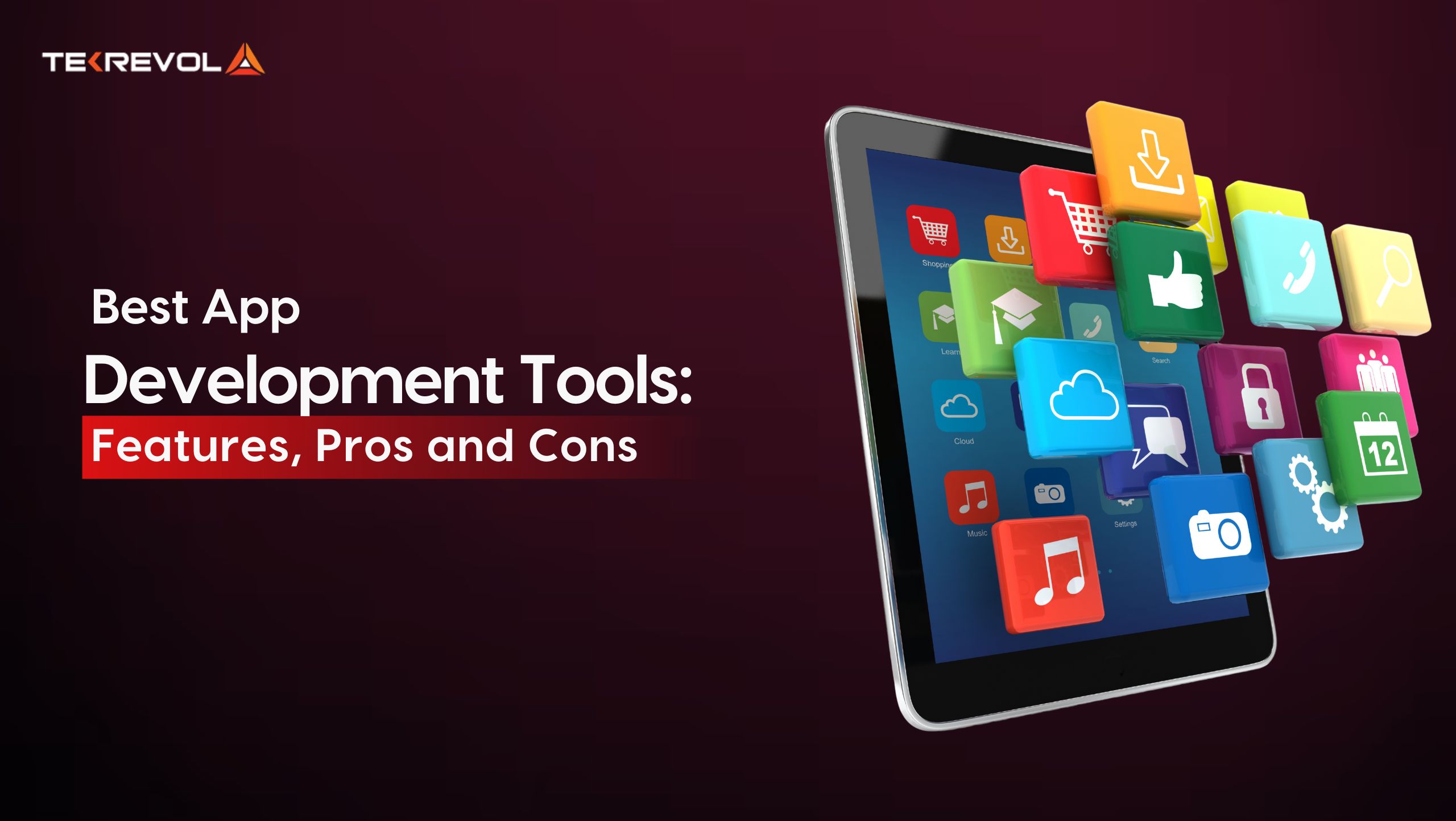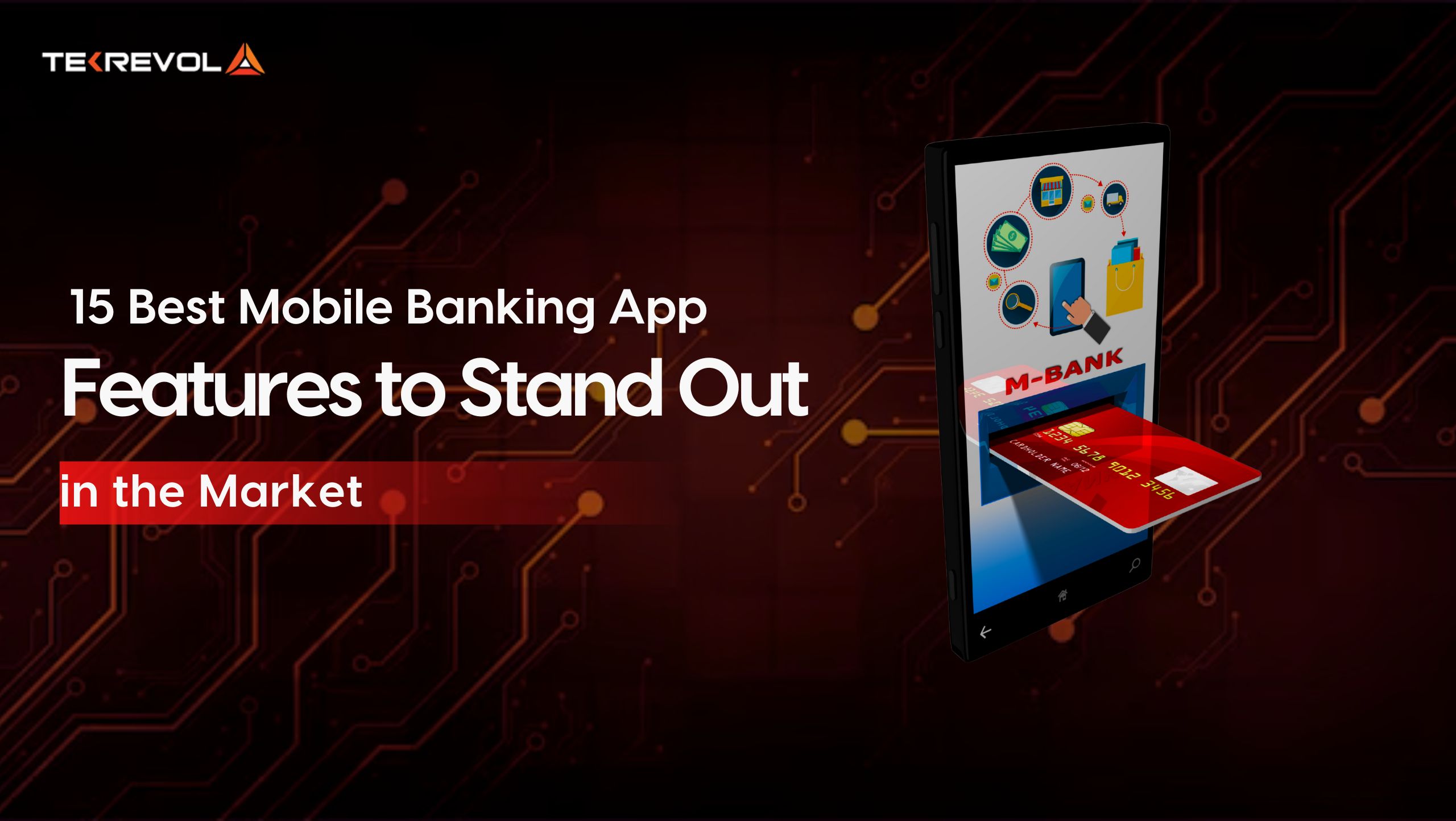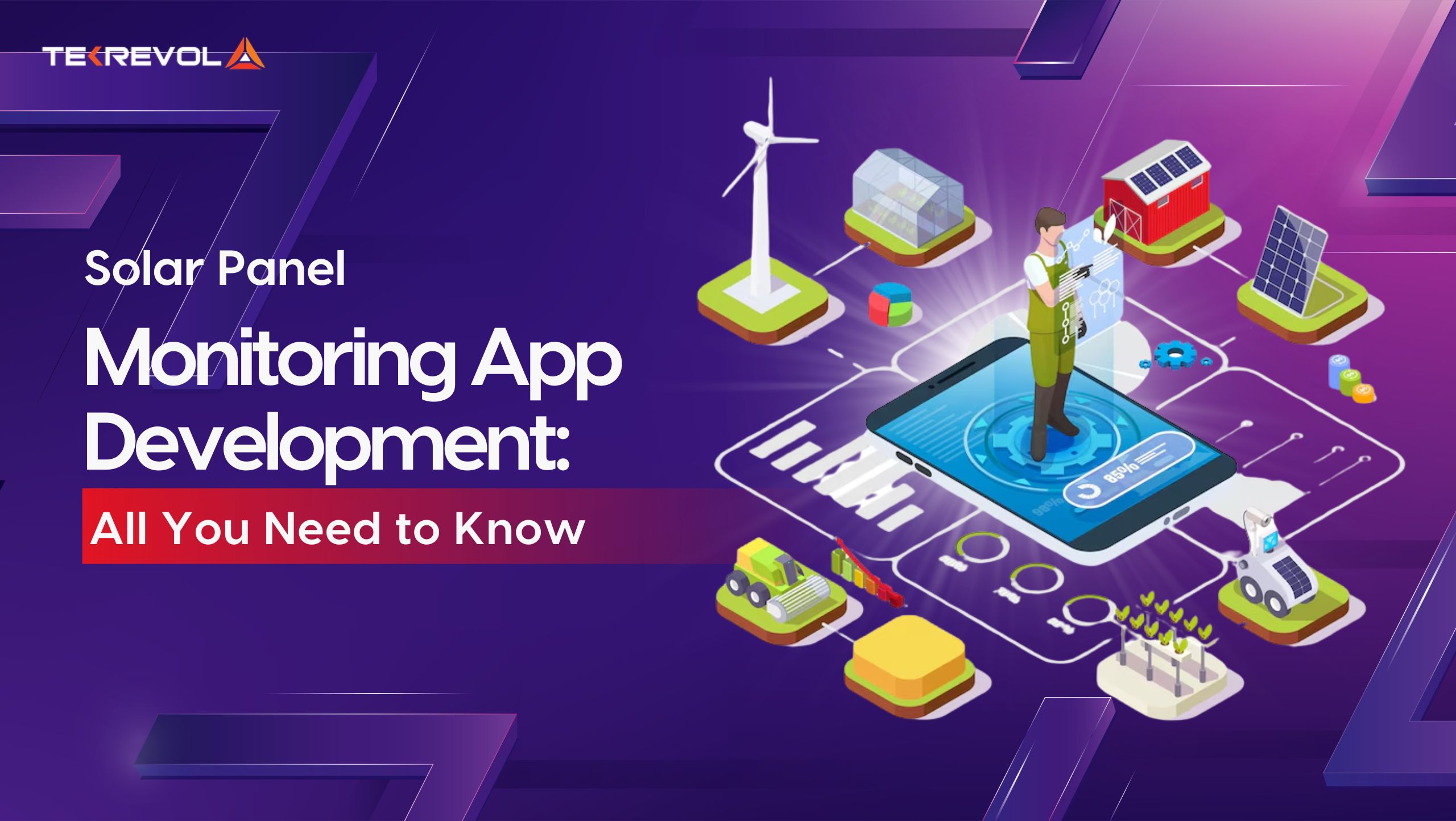You must have wondered how those little icons (apps) on your phone turn into money-making machines. Well, if you did, you’re not alone! The 2025 app economy is blowing up with never-before-seen possibilities for businesses of all sizes and app coders everywhere.
According to the Precedence Research’s report, “The global application market has a valuation of more than US$330.61 billion in 2025. Furthermore, it will expand to nearly US$1.103 trillion in the period ending 2034 with a CAGR of 14.33% in 2025-2034.”
Safe to say, possibilities to earn a buck are in abundance, and hence why app monetization has become just like a fishing situation. You need the correct bait, the correct location, and sometimes a little bit of patience!
You may be dreaming of the next hit title or launching a valuable solution that solves real-world problems and there is a strategy with your brand attached to it.
That is why in this blog, I’ll cover all app monetization strategies, everything from classic advertising models to cutting-edge subscription strategies.
I’ll break down these revenue models for apps into bite-sized chunks that actually make sense, share real-world examples, and help you figure out which approach fits your unique app idea.
Ready to turn your app vision into a revenue stream? Let’s dive in!
Understanding the App Monetization Landscape
Let’s look at the app monetization scene and everything it entails:
Growth of Mobile App Revenue and Market Trends
The app market is exploding! As per Marketing Brew’s report “Global app revenue hit $150+ billion in 2024, with a projected 15% growth for 2025.”
Gaming leads the charge, but health, finance, and education apps are gaining serious momentum. With 7 billion smartphone users worldwide, there’s never been a better time to jump into the app monetization game.
- Ready to Turn Your App Idea into a Revenue Machine?
- Let Tekrevol's expert team build and optimize your app for maximum profit potential.
The Difference Between Free and Paid Apps
Here’s how free apps and paid apps differ from one another:
| Free Apps | Paid Apps |
| Larger user base potential | Immediate revenue |
| Relies on in-app purchases/ads | Higher perceived value |
| Lower barrier to entry | Typically lower download numbers |
| Better for data collection | Less post-launch monetization pressure |
| Higher engagement needed | More committed users |
| Requires strong retention strategy | Must deliver clear value proposition |
Key Factors That Influence App Revenue
The following are the factors that influence app revenue:
- User Acquisition Cost: The lower your cost per install, the faster you’ll reach profitability. Social marketing typically outperforms paid ads.
- Retention Rate: The gold standard is 30%+ users still active after 30 days. Each retained user is worth 5-10 times a new user.
- Engagement Metrics: More daily active users and longer session times directly correlate with monetization success.
- Platform Choice: iOS users typically spend 65% more than Android users, but Android offers a wider global reach.
- App Category: Gaming, dating, and productivity apps have the highest monetization potential in 2025.
Best Monetization Models for Mobile Apps

The following are the best nine monetization models for mobile apps that allow you to make money on apps:
1. Advertising-Based Revenue Model
Think of ads as your app’s rent-paying tenants! This model is one of the best ways to earn from mobile apps as it lets you keep your app free while generating consistent income.
Smart advertisement that does not interfere with and instead improves the experience of the user in 2025.
Average revenue per user of ad-supported apps ranges between a monthly charge of $0.10 and $2 and therefore perfectly fits large-user base apps.
-
Cost Per Click (CPC) – Earn Per Click on Ads
You get paid when users actually click those ads. Simple but effective!
Gaming and media apps normally get 1-3% click-through rates with each click earning you $0.05-$0.50 based on the audience that you’re targeting.
-
Cost Per Impression (CPM) – Earn Per 1,000 Views
Ka-ching for every 1,000 ad views! This model rewards apps with longer session times and frequent use.
Current rates range from $2-$10 per 1,000 impressions, with lifestyle and entertainment apps seeing the best results.
-
Cost Per Action (CPA) – Earn Per User Action
The money maker! You earn when users complete specific actions like signing up or making purchases.
These typically pay $1-$20 per action, making them lucrative for apps with highly engaged audiences.
-
Cost Per Install (CPI) – Earn Per App Install
Your app becomes a mini-billboard for other apps. When your users install those advertised apps, you earn $0.50-$3 per install.
Works beautifully for gaming apps where users regularly seek new experiences.
2. Subscription-Based Model
Subscription is the holy grail of app monetization! It is a predictable recurring revenue that investors love. In 2025, subscription apps will generate 3-4x more revenue than ad-supported ones.
More so, Statista reports that “last year in 2024, annual subscription apps had a way higher retention rate among users as compared to other models.”
Therefore, the key is delivering consistent value that makes that monthly payment feel like a bargain, not a burden.
-
Monthly vs. Annual Subscription Plans
Monthly plans bring faster initial revenue, while annual plans improve cash flow and reduce churn.
Offering both with a 15-20% discount on annual plans typically maximizes overall revenue potential.
-
Freemium Subscription with Premium Features
Hook users with free basics, then wow them with irresistible premium features.
The magic conversion rate is 2-5% – hit this target by carefully selecting which features sit behind the paywall.
-
Auto-renewal and Retention Strategies
Set auto-renewal as default but be transparent about it. Combine with loyalty rewards, exclusive content drops, and personalized engagement to keep subscribers happy and renewal rates above 80%.
3. In-App Purchases (IAP) Model
Let users fall in love with your app before presenting opportunities to enhance their experience through purchases.
This model works across virtually all categories and generated $130 billion globally in 2024. The key is creating genuine value, not frustrating paywalls.
-
Consumable vs. Non-Consumable Purchases
Consumables (like game coins) can be bought repeatedly, creating ongoing revenue.
Non-consumables (like premium filters) are one-time purchases that provide lasting value and higher initial price points.
-
Virtual Goods and Digital Products
From character outfits to premium stickers, these digital items have near-zero cost to reproduce but high perceived value.
Successful apps create limited-time offerings to drive FOMO and purchasing urgency.
-
Pricing Strategies for In-App Purchases
Test multiple price points and bundle options. The price anchoring technique (showing premium options first) can increase average purchase value by 15-30% across most app categories.
- Not Sure Which Monetization Model Fits Your App?
- Get a personalized monetization strategy tailored to your unique app and audience.
4. Affiliate & Referral Marketing Model
Become the trusted middleman! Get the goods and services that users will love and take a margin of the transaction.
This business model fits perfectly with lifestyle, purchase, and fitness apps where the recommendation of goods happens naturally.
-
Earning Commissions from Partnered Brands
Work with companies that align with the intention of the application. The rates of commission will be 5-30% depending on the sector with higher-priced commodities giving higher rates of commission with lower rates of conversion.
-
Best Affiliate Networks for Apps
Amazon Associates, ShareASale, and CJ Affiliate are among the networks that integrate with ease and include thousands of partners.
Mobile-centric networks such as Button and TUNE cater specifically to in-app referrals with a higher chance of conversion.
5. Sponsorship and Brand Partnerships
Think of sponsorships as finding a wealthy friend who believes in your app! In 2025, brands are allocating 25% more budget to app partnerships than traditional advertising.
This model works brilliantly for niche apps with dedicated, targeted audiences. The key is alignment—when your app’s purpose naturally complements a brand’s products or services.
-
How to Attract Sponsors for Your App
Create a compelling media kit highlighting your user demographics, engagement metrics, and unique value proposition.
Reach out to brands whose customers overlap with your user base, and always lead with specific partnership ideas.
-
Revenue Sharing and Sponsored Content
Split revenue with brands for co-created features or content that adds genuine user value.
The most successful partnerships achieve 3-5x higher engagement than traditional ads while feeling authentic to users.
6. Selling Physical & Digital Products (E-commerce Apps)
Transform your app into a virtual storefront! As per the BusinessofApps report “E-commerce application income reached a record-breaking $3.88 trillion in 2024 with 72% of it coming from mobile purchases.”
Regardless of whether you offer goods yourself or play the middleman in the sale of goods of others, the mobile commerce boom has yet to arrive.
-
Dropshipping and Marketplace Integration
Eliminate inventory headaches by connecting suppliers directly with customers. Modern APIs make it simple to integrate with Shopify, Amazon, or AliExpress while maintaining your branded experience.
-
Direct Sales vs. Third-Party Platforms
Control the entire customer journey with direct sales for higher margins (15-30% more), or leverage established platforms’ traffic for faster growth but pay 5-15% in platform fees.
7. Collecting and Selling User Data
Data is the new oil! Properly anonymized and ethically collected user insights are incredibly valuable to market researchers and advertisers.
In 2025, the average active user generates $5-15 worth of data annually, making this a solid supplementary revenue stream.
-
Ethical Considerations & Privacy Compliance
Always obtain explicit consent, anonymize personal information, and follow regional regulations like GDPR and CCPA.
Transparent data practices actually increase user trust and app retention by up to 40%.
-
How Data Monetization Works
Aggregate anonymous insights about user behaviors, preferences, and trends that help businesses make better decisions.
Package these insights into industry reports or sell directly to data brokers through secure channels.
8. Crowdfunding & Donations Model
Tap into your community’s generosity! Apps with passionate user bases can generate substantial revenue through voluntary contributions.
This model works especially well for utilities, creative tools, and socially conscious apps where users want to support the mission.
-
Popular Crowdfunding Platforms for Apps
Kickstarter and Indiegogo work best for initial app development funding, while Patreon and Ko-fi excel for ongoing support. Each platform has different fee structures (5-8%) and audience expectations.
-
Engaging Users to Support Your App
Make supporting feel rewarding, not obligatory. Offer special recognition, early feature access, or exclusive content to supporters while maintaining core functionality for all users.
9. Transaction Fees & Commission-Based Revenue
Be the middleman and take a slice of the pie! This model thrives in apps that facilitate exchanges between users—whether they’re buying goods, booking services, or transferring money. Financial apps, marketplaces, and service platforms dominate this category in 2025.
-
Apps That Charge a Percentage Per Transaction
The sweet spot is 2-5% per transaction—high enough for meaningful revenue but low enough to encourage volume.
Successful apps processing $10,000 daily can generate $200-500 daily in commission revenue.
-
Payment Gateways & Commission-Based Models
Partner with payment processors like Stripe or PayPal, who typically charge 2.9% + $0.30 per transaction. Add your own 1-3% fee on top while providing value that justifies the combined cost.
How to Choose the Right Monetization Strategy for Your App
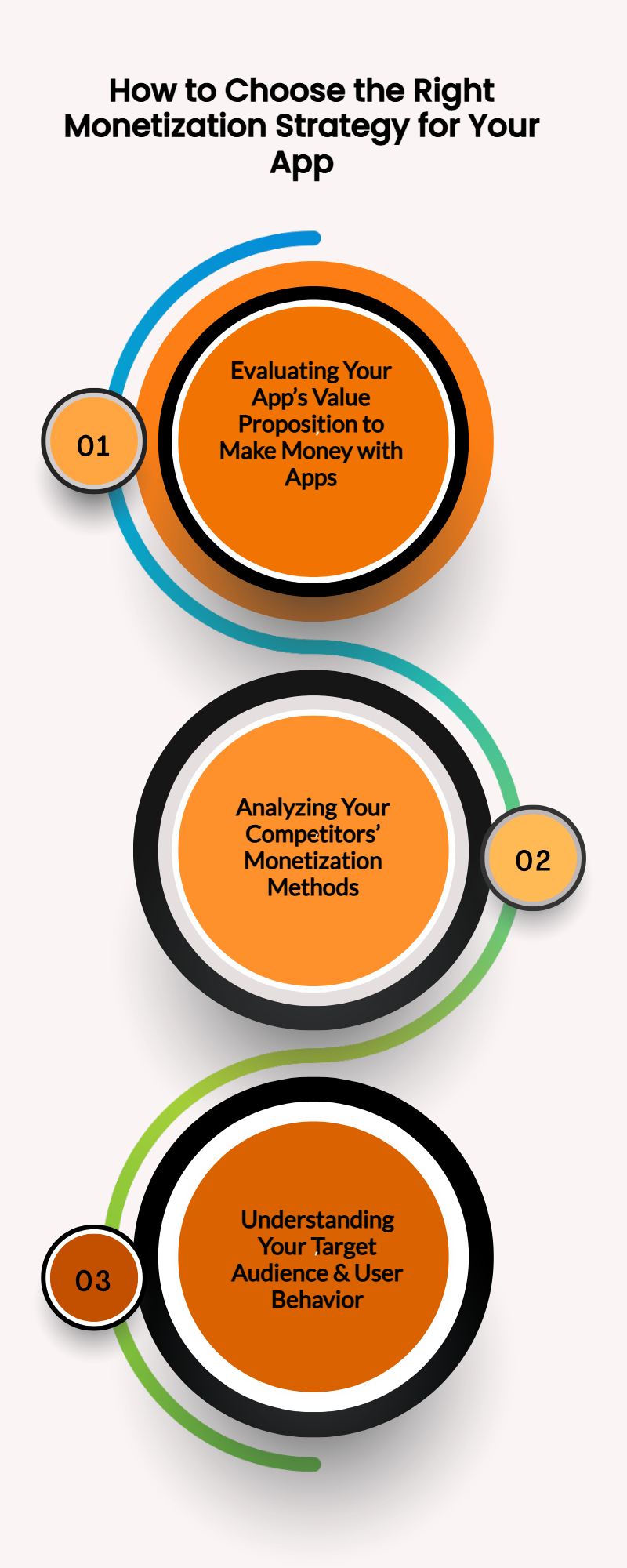
Here’s how you can choose the monetization model for a profitable app development that fits your needs the best:
Evaluating Your App’s Value Proposition to Make Money with Apps
Start by identifying what users love most about your app. Is it solving a problem, entertaining them, or saving time?
Your core value determines your monetization approach. Premium features should enhance this value without limiting what users already enjoy.
Analyzing Your Competitors’ Monetization Methods
Don’t reinvent the wheel! Download your top 5 competitors and document their monetization tactics.
Note what feels natural versus intrusive. The most successful apps in your category have already tested what works—learn from their successes and failures.
Understanding Your Target Audience & User Behavior
Match your monetization to user habits. Younger audiences accept ads but resist subscriptions. Business professionals prefer paid apps with no ads.
High-frequency users tolerate more monetization touchpoints than occasional users, who need friction-free experiences.
- Want to Develop An App That Could Earn?
- Connect with our experts and create an app with monetization models.
Need Help With Money App Build? Partner With Tekrevol to Develop and Monetize Your App
Are you wondering how to create an app and make money but do not know how? Leave that job to us. We will help you transform your app idea into a profitable business.
While you might now ask how to create an app for free and make money, with the quality and value for money we deliver, our app development cost is almost as good as free! We don’t just create apps at Tekrevol’s app development company— we build revenue engines.
More so, we are not here to simply tell you how to make an app that makes money, but we are here to do it. Our team combines cutting-edge development with strategic monetization planning, ensuring your app generates income from day one.
We’ve helped over 200 startups and established businesses implement the perfect revenue model for their unique audience and app category.
From the conceptual phase to the optimization of the market, our app development company will take you through each and every step of developing an application that users adore and investors respect.
Our data-centric strategy removes the speculation factor of monetization and allows you to do what you’re good at—developing a great application experience.
Wrapping It Up
The 2025’s app monetization environment has never been richer with possibilities! Keep in mind that there is no such thing as a one-size-fits-all strategy—the greatest strategy involves multiple income sources that fit specifically with your particular app and audience. Begin with the reasons that make your app valuable and try out monetization models that build on that instead of detracting from it. The best app builders don’t hesitate to pivot based on customer feedback and usage patterns.
Begin with a flagship source of income, monitor how it influences customer experience and stickiness, and gradually introduce additional sources of income. Regardless of whether it’s a game, a utility, or a social network, be focused on making users love it and use it. In the competitive world of apps nowadays, strategic monetization is not solely about earning a profit—it’s about developing lasting value that will sustain your application years into the future. So go and create something great that users will gladly pay for!

 254 Views
254 Views February 26, 2025
February 26, 2025